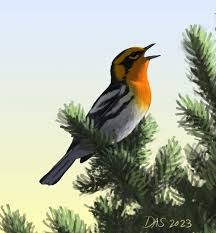
The ode has come a long way. Consider its not-so-humble roots. In A Poet’s Glossary, Edward Hirsch defines it as “a celebratory poem in an elevated language on an occasion of public importance or on a lofty common theme.” In ancient Greece, odes were meant to be sung. Cue joy and victory.
But boy, howdy, has the ode evolved. Now it is like a comfortable shoe. Easy. Accessible. But still joyful and worthy of a victory lap. Hirsch says, “The modern ode, which freely intermingles Greek and Latin elements, represents the claiming of an obligation, some inner feeling rising up in urgent response to an outer occasion, something owed.”
He continues: “The idea of a formal poem of considerable length written in an elevated language has had less currency in modern times, but has sometimes been revitalized, as in Hölderlin’s mystical odes or in Pablo Neruda’s wildly energetic three books of odes on daily subjects, which praise the dignity and strangeness of ordinary things.”
If there’s one thing we modern-types love, it’s the ordinary. We fancy ourselves, after all, as ordinary in every way. Perfect mediums, then, to sing the praises of quotidian delights.
Here, the late Thomas Lux considers these strangely wonderful beings from another planet called “happy people.”
How do they do it? Especially (channeling Hemingway here) “in our time”? Step One is to avoid the news, I’m sure. But step everything else is to focus on the good in everyone. It’s there in varying doses, in case you’re wondering. Lux’s poem, then, is a description, an homage, a celebratory song to that simple, but often overlooked, fact:
Ode to the Joyful Ones
by Thomas Lux
Shield your joyful ones.
—from an Anglican prayer
That they walk, even stumble, among us is reason
to praise them, or protect them—even the sound
of a lead slug dropped on a lead plate, even that, for them,
is music. Because they bring laughter’s
brief amnesia. Because they stand,
talking, taking pleasure in others,
with their hands on the shoulders of strangers
and the shoulders of each other.
Because you don’t have to tell them to walk toward the light.
Because if there are two pork chops
they will serve you the better one.
Because they will give you the crutch off their backs.
Because when there are two of them together
their shining fills the room.
Because you don’t have to tell them to walk toward the light.
I love how joyful ones “bring laughter’s / brief amnesia.” I love how joyful ones lack the selfish gene we secretly cherish so much. And I love best joyful ones’ incandescent, otherworldly ability to shine and walk toward more shining.
We can emulate that. We can knock on the tree fort door of joyful ones. Both you know and I know they’ll let us in. Going there, then, is not half the battle. It’s all of it.
Previous to Lux, the Chilean poet Pablo Neruda did wonders for updating the ode. He wrote two books of them. Odes to all manner of every day items, clothes, foods, utensils. As an example, here is his extravagant praise for a new pair of homemade socks:
Ode to My Socks by Pablo Neruda
Mara Mori brought me
a pair of socks
which she knitted herself
with her sheepherder’s hands,
two socks as soft as rabbits.
I slipped my feet into them
as if they were two cases
knitted with threads of twilight and goatskin,
Violent socks,
my feet were two fish made of wool,
two long sharks
sea blue, shot through
by one golden thread,
two immense blackbirds,
two cannons,
my feet were honored in this way
by these heavenly socks.
They were so handsome for the first time
my feet seemed to me unacceptable
like two decrepit firemen,
firemen unworthy of that woven fire,
of those glowing socks.
Nevertheless, I resisted the sharp temptation
to save them somewhere as schoolboys
keep fireflies,
as learned men collect
sacred texts,
I resisted the mad impulse to put them
in a golden cage and each day give them
birdseed and pieces of pink melon.
Like explorers in the jungle
who hand over the very rare green deer
to the spit and eat it with remorse,
I stretched out my feet and pulled on
the magnificent socks and then my shoes.
The moral of my ode is this:
beauty is twice beauty
and what is good is doubly good
when it is a matter of two socks
made of wool in winter.



